Leaving Baiona (Galicia, Spain), we headed south to Portugal. The coastline changed completely in a very short distance. Gone were the numerous flooded valleys and small, quaint fishing villages. These were replaced by the long straight Atlantic coastline of Portugal with occasional larger ports.
The wind and swell here comes straight from across the Atlantic. With no land masses to break their force, they bombard the coastline, meaning that there are very few safe places to anchor. We knew that we would be in for long sails of 50 -70 miles followed by stays of several days in marinas.
Our first stop would be Povoa de Varzim.
At this time of year (August), the northerly Portuguese trade winds mean that conditions are usually perfect for heading south. We monitored the forecasts and picked a day with a forecast of Northerly force 4 (11-16 knots) with predicted gusts of 25 knots. A perfect day for sailing south.
We set off at 8am on a grey and damp morning. The early morning mist clung to the coast, but heading away from land, the skies were clear and blue.
However, this good start did not continue and, unfortunately, the predicted winds did not appear. Instead we had 2 knots of wind all day…no sailing for us, only motoring!
We eventually arrived at Povoa de Varzim at 1630, 52 miles in almost 9 hours.
Povoa de Varzim is a coastal city in northern Portugal, about 30km north of Porto. The settlement itself dates back to around 900 BC, but the modern city did not emerge until after the conquest of the Roman Republic in 138 BC.
It is a prominent fishing port and also a well known beach resort. It is very different from the quaint Spanish rias, but it is a city with the vibe of a real Portuguese town
Exploring the city, we found much evidence of its history and the people who shaped the modern day city.

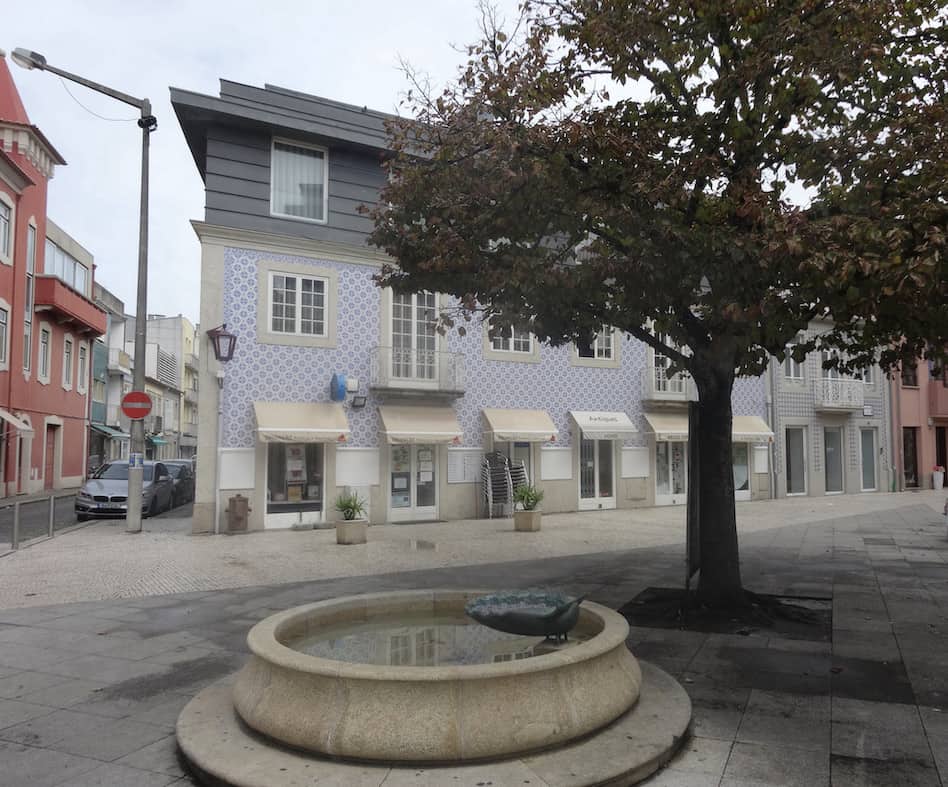
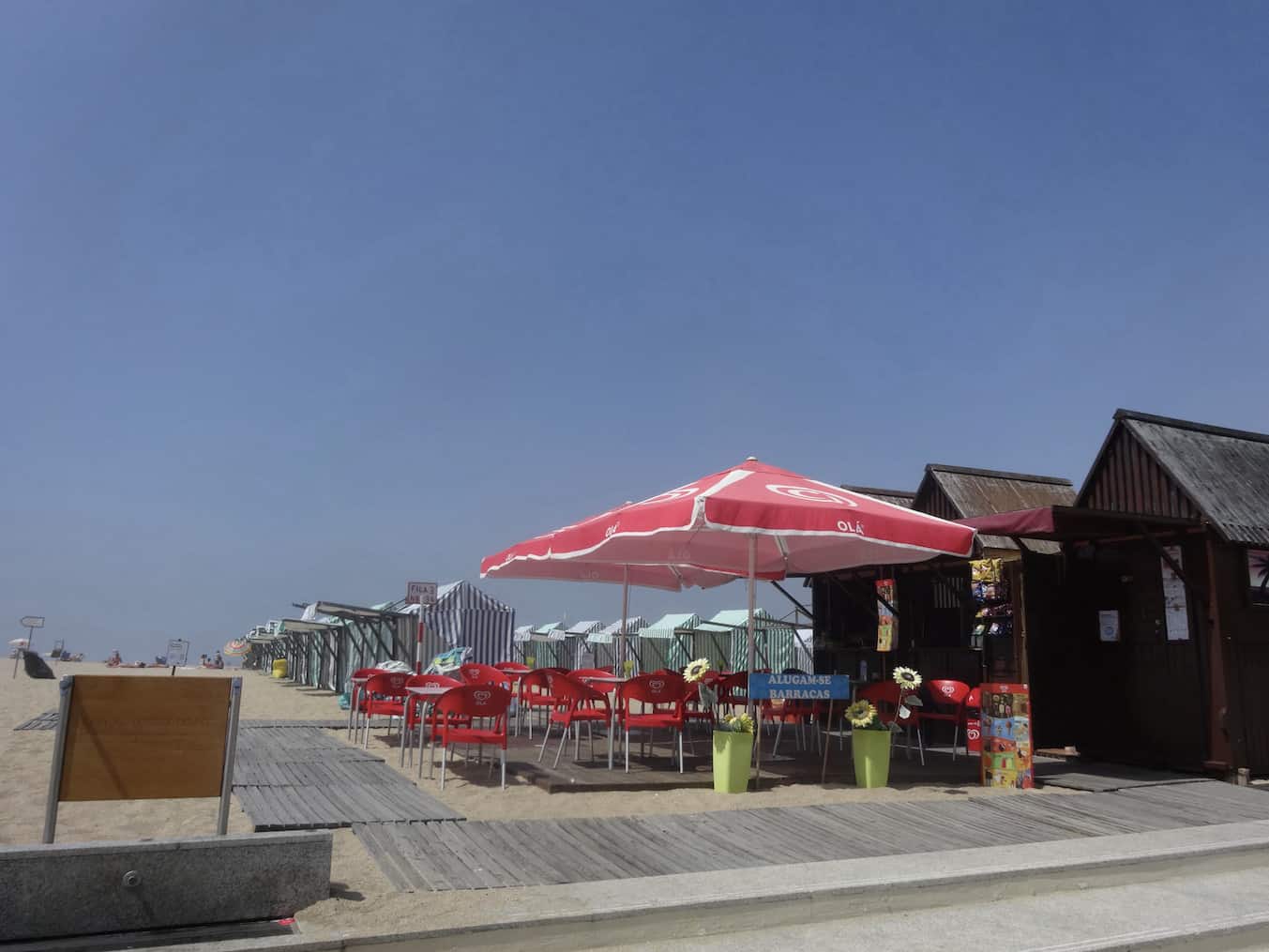
Muro de Azulejos
The Portuguese love their tiles with many buildings decorated in ornate designs or pictures. Along the seafront in Povoa de Varzim there is a huge wall of beautiful blue tiles illustrating the town’s history and its fishing heritage.
Each image is surrounded by marks which look like an ancient alphabet. These are actually examples of the signatures of the fishermen who went to sea at an early age, instead of going to school and learning to write.
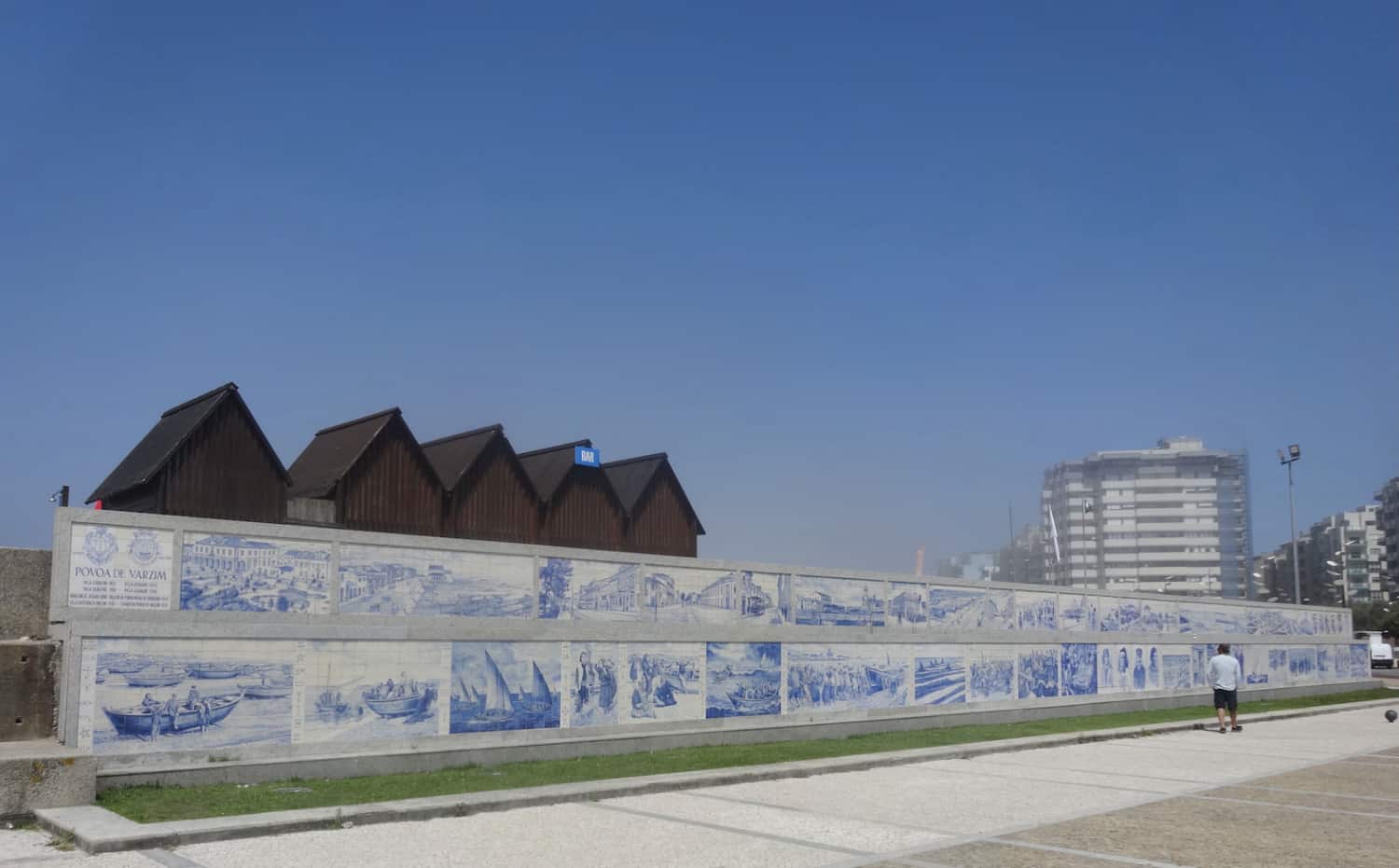
Igreja Nossa Senhora da Lapa
Every Portuguese town hosts many churches: Povoa de Varzim has 10 that we counted!
The one closest to the marina has an unusual history. It was originally built in 1772 by the local fishing commuinty and actually has an old lighthouse attached to it!
Hoping to see inside, we timed our visit to coincide with the end of the Sunday morning service. We did not intrude; instead choosing to stand in the doorway, admiring the beautiful singing which was accompanied by a small orchestra.
Once the local residents had left, we were able to go inside – what a treat. The outside was plain simple built, but as we saw on entering, this hides a lavish interior.
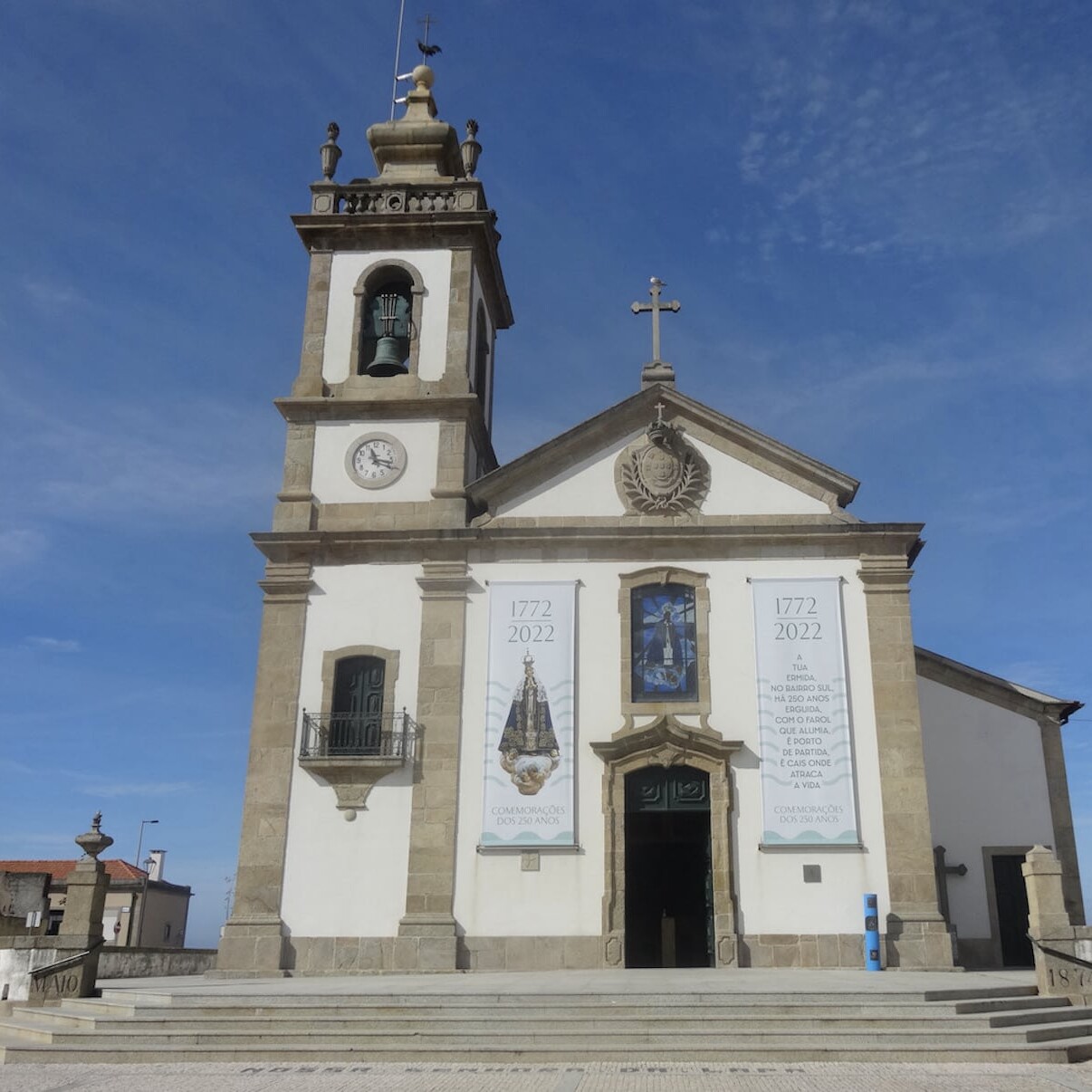
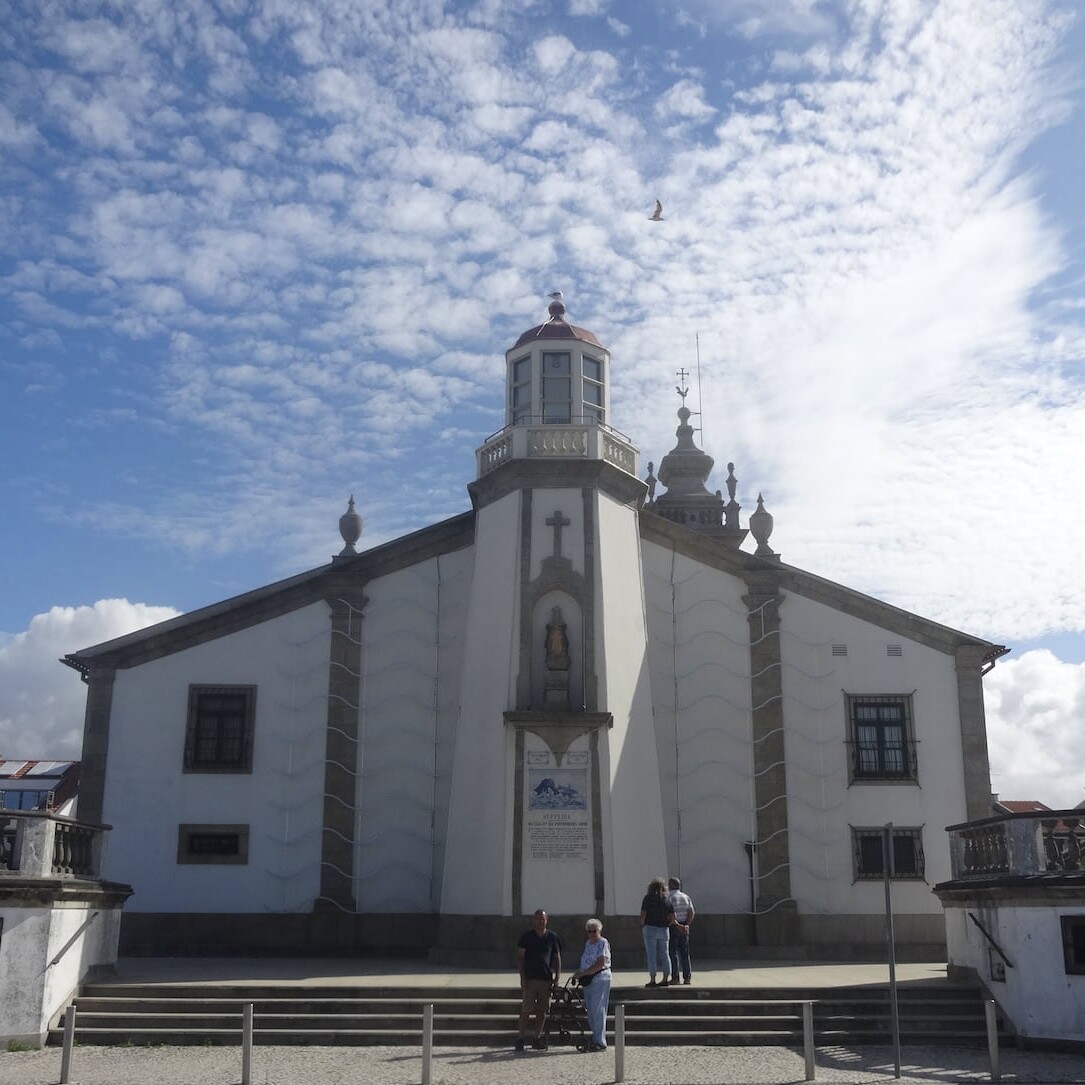
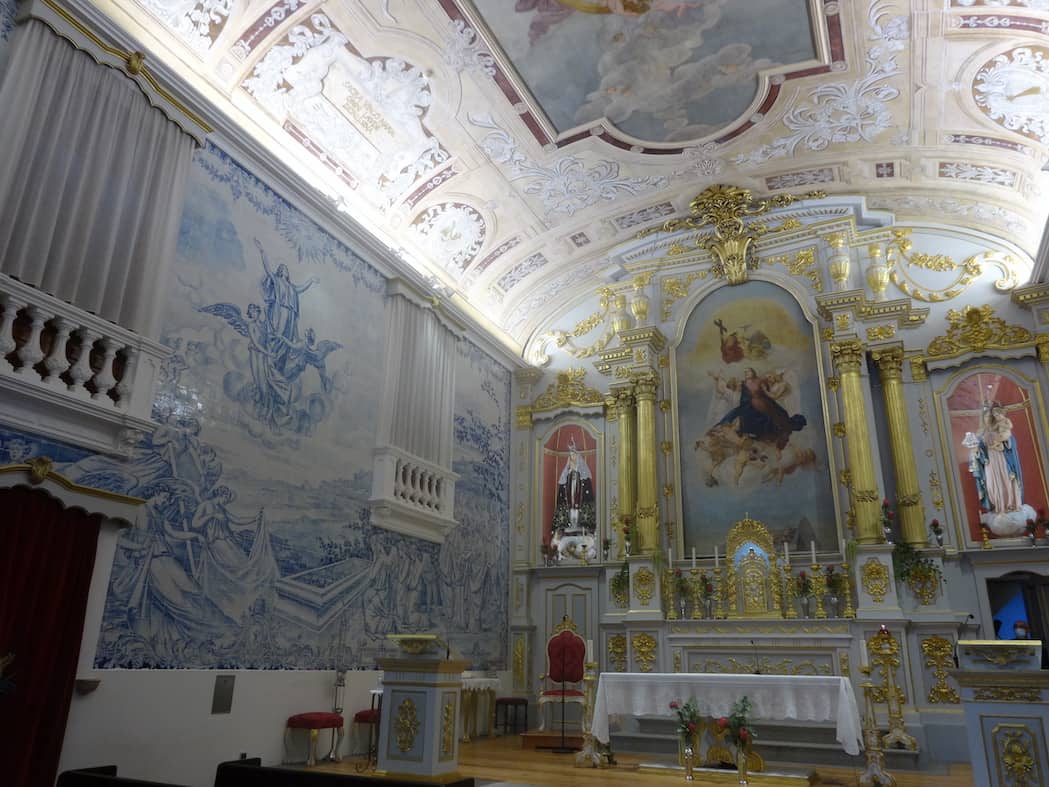

Our home in Povoa de Varzim was the Marina Povoa. This was a very friendly and welcoming place, close to town, and within walking distance of the metro line and also an excellent supermarket. Couple this with a monthly berthing rate of 270 euros (discounted further by 50% as we are part of the World Cruising Club ARC+ rally), it was a perfect stopping place for us.
The facilities at the marina were not the most lavish that we have been to, but they were ideal. A large toilet and shower block with a lounge area. There was also a laundry area equipped with two washing machines and a drier. At the bargain price of 2.50 euros each, we did plenty of washing here!
The Marina actually has two parts to it. The original side has the facilities, but the pontoons are older, much shorter and the area is prone to surge coming in through the harbour entrance. This berthing arrangement was fine while we we on board, but as we were planning to travel back to the UK for a few weeks, we chose to move Escapade across to the newer, more sheltered side with its newer, longer pontoons.
Definitely a place we would recommend.
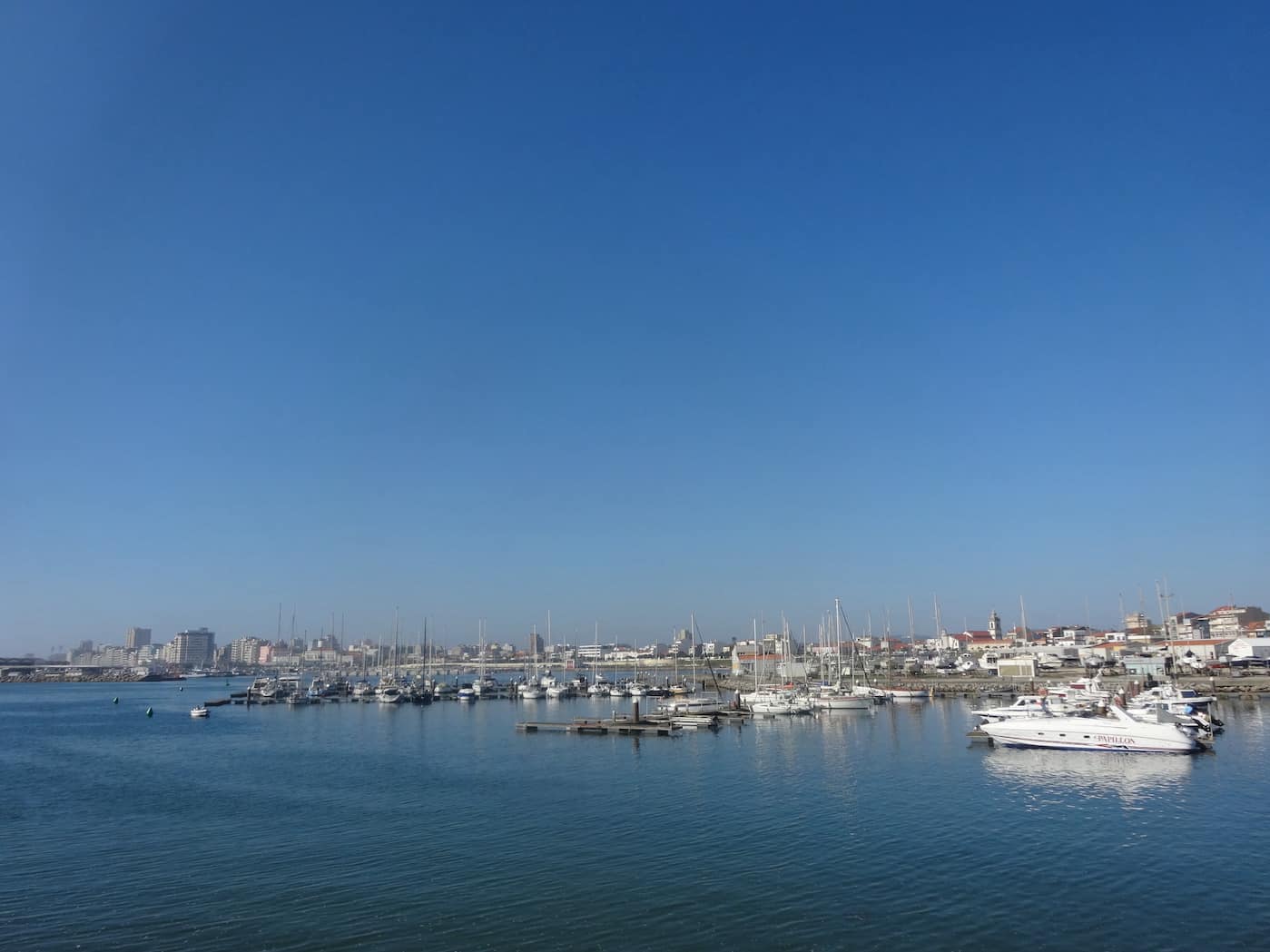
It’s all fascinating!
It certainly is! We are learning so much. Next post is about Porto…such a beautiful city.
Fingers crossed, you will be travelling again soon.
Stay safe x
What a great spot to be even if you say you are coming back to the UK for a few weeks! Will we see you again?
Hi,
Great to hear form you. Hope you are both well.
We loved the town and it was a brilliant place to leave the boat…secure but cheap!
Our posts are several weeks behind, so this is where we left Escapade when we were back in August. We are now in the Canary Islands, preparing for our Atlantic crossing n November!!
Stay safe